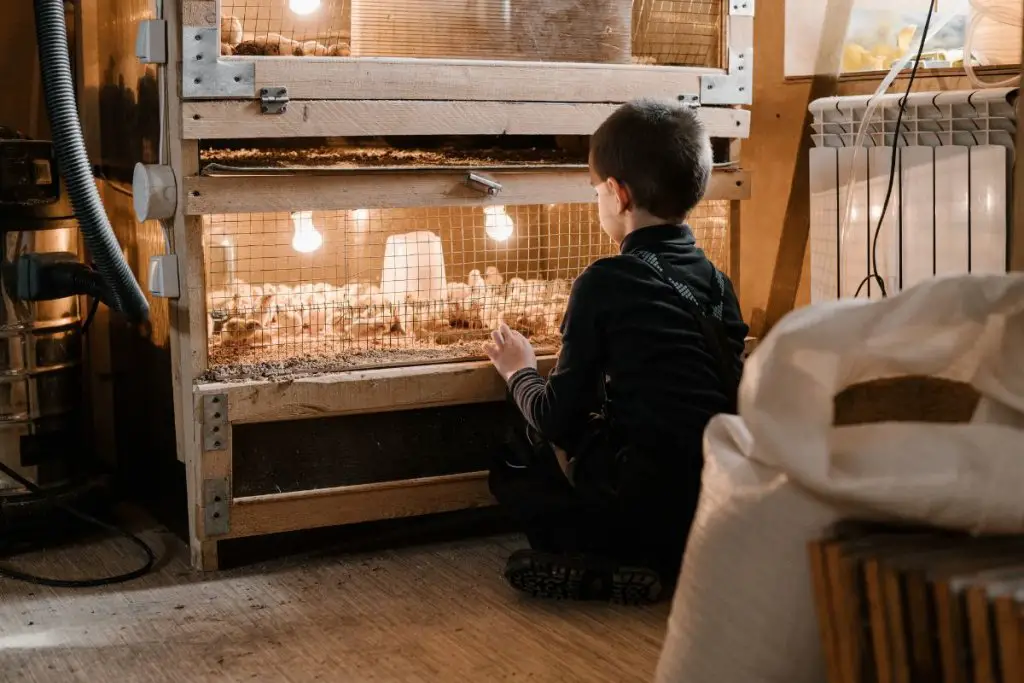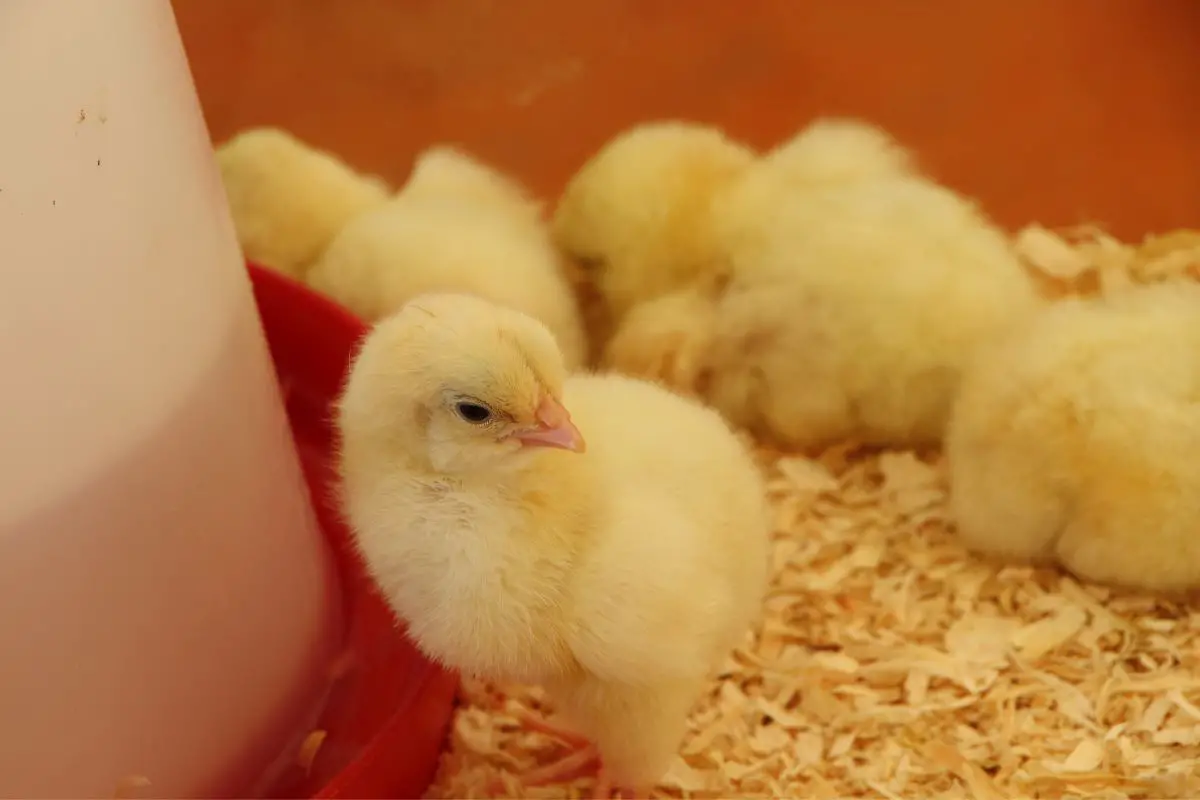A chicken brooder is a place that is set up specifically to help baby chicks grow after they leave the hatchery, allowing you to safely raise them during the most critical stages of growth. They're typically used during the first few weeks after hatching.
Everyone loves baby chicks and if you are interested in raising baby chicks from your backyard chicken flock, there are several key elements that you will need to know to optimize your chances of success.
If you are interested in raising baby chicks, it is important that you understand what a chick brooder is, how to set it up, and what you need to have in your brooder to help your baby chicks hatch and thrive.
Table of Contents
What is a Chicken Brooder?
Prior to emerging from their shell, fertilized eggs are placed inside an incubator which is temperature and moisture controlled to help the chicks develop and hatch.

A chicken brooder is a place that is set up specifically to help baby chicks after they leave the hatchery. This special environment you create allows for raising chicks safely, during the most critical stages of growth during the first weeks after hatching.
What are the Types of Chicken Brooders?
There are two main types of chicken brooders. These are a small brooder box and a larger area brooder.
Chicken Brooder Box
At its core, a chicken brooder box is a somewhat small area that is set up to contain baby chicks and keep them healthy, warm, and safe, while providing for all of their basic needs. Most people will start with a chicken brooder box.

Please note that a chicken brooder box must have sides that are at least 12 inches tall so your chicks don’t escape. It is recommended that you build them higher if possible, with many experts agreeing that 3 feet is ideal.
Some people will have an initial brooder box made out of a dog crate, a child’s playpen, a rabbit hutch, stock tank, or a small animal cage. Any of these can work as a brooder box, but these will not be suitable as the chicks grow because they will need more space.
Area Brooder
An area brooder, has all of the same things a brooder box has, but on a larger scale. Ideally, you will place things in the same general areas as they were in your brooder box so the chicks know where to go to find food, water, warmth etc.

You can purchase pre-fabricated kits or expand your brooder box to ensure your chicks have all of the necessary elements and space required to thrive.
Your chicks will stay in your area brooder until they are ready to graduate to a coop.
What Types of Chicken Brooder Heaters Are There?
There are two main types of heating elements that you can use not only in your brooder but in your chicken coop as well.
Heat Lamp
The first is the heat lamp. Heat lamps are inexpensive and easy to find, and work well to cover an entire area with heat.

The drawbacks of heat lamps are they often emit a very bright, unnatural light, and can overheat an area. Your chicks may not be able to find an area to cool off.
Heat lamps are also responsible for most barn fires. They are so hot and placed quite close to animal bedding, which can encourage fires to start.
Heating Plate
The second option is a heating plate. Heating plates are a more natural option for your baby chicks, as they simulate a mother hen, and work well to warm your babies who can sit on top of them when they are cold, and move away when they get too warm.

Heating plates are more expensive and may be more difficult to find, but they are well worth the peace of mind as they are not known to cause fires.
What are the Requirements of a Chicken Brooder?
It is possible to either purchase a chicken brooder that is already complete or do a DIY build of a chicken brooder.
How you set up your chicken brooder is up to you and based on your individual needs and how many chicks are in it, but it must contain the following:
- Heat source for it (either a heat lamp, or heat plate) as we discussed earlier.
- You will need to build it with security in mind to keep out all unwelcome predators and the area should be secured to the point where only those involved with the baby chicks should have access.
- You must also ensure that you have areas set up inside for food and water – and these should be checked daily to ensure freshness and quantity.
- Lastly you will need bedding for your chicks. Paper products work best in the first couple of days (such as paper towels and newspaper) after which you can move to pine shavings.
- Prior to 4 weeks of age, baby chicks require 6 inches of space.
- For best results, each chick will require 1-2 square feet of space once they reach 4 weeks of age, until they reach 8 weeks of age, when they will require 4 square feet of space. It may seem like a lot when the chicks are so small, but this will help prevent them from fighting as they sort out their pecking order.
What Type of Chicken Brooder Should I Buy?
This ultimately depends on what your finances allow, and what your future plans are. Do you anticipate breeding your birds several times? If so, it may make more sense to purchase a kit from some place like Amazon, since it will see so much use.
However, if you are only planning on doing it once, it may be more cost-effective to simply DIY your poultry brooder. You can build one with a large cardboard box, chicken wire, a chick feeder, brooder lamp or heating plate, and the requisite chick starter, chicken feed, bedding, and water area.

Many people prefer a DIY chick brooder because it also allows for customization whereas a kit has a specific place for each of the required elements.
Just ensure when building your DIY chicken brooder that you are meeting all of the requirements for your baby chickens.
What Temperature Should You Set in Your Chicken Brooder?
The first step prior to introducing baby chicks to your chicken brooder is to ensure everything is clean and sanitized – even if you bought it new, ensure you clean all surfaces thoroughly.
Make sure your heating element works properly and set your brooder temperature accordingly.
These are the temperature requirements for baby chickens based on age:
- Day 0-7 (95°F)
- Day 7-14 (90°F)
- Day 14-21 (85°F)
- Day 21-28 (80°F)
- Day 28-35 (75°F)
- Day 35 (70°F)
The above temperatures are a basic guideline but you need to observe your brooding chicks closely anytime you change the temperature to see how they adjust.
If they are huddling under the heating element, it is too cold. If they are huddled against the walls of the brooder, it is too warm.
What you want to observe is chicks spaced out evenly and not clustered in either of these areas. That is when you know you’ve got the right temperature.
Time To Start Breeding
Brooding chicks can be a wonderfully rewarding experience and quite fun to do.
It is important that you pay attention to your chicks to ensure they are doing well, and make adjustments as needed to their food, water, heating, and bedding to encourage them to grow up healthy and happy, and join your backyard flock.

